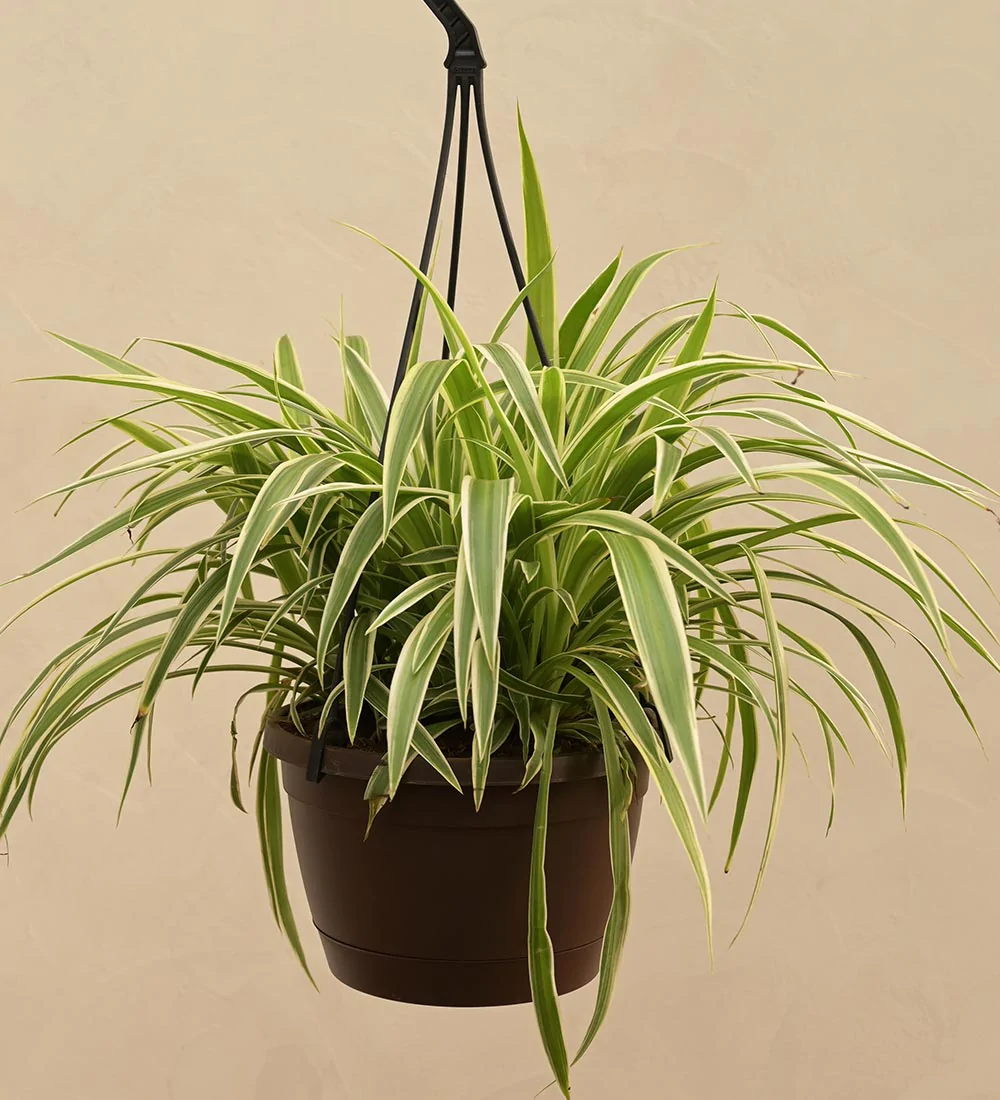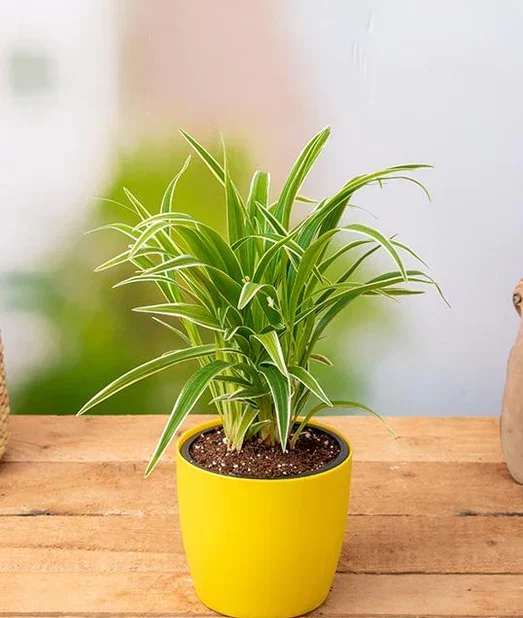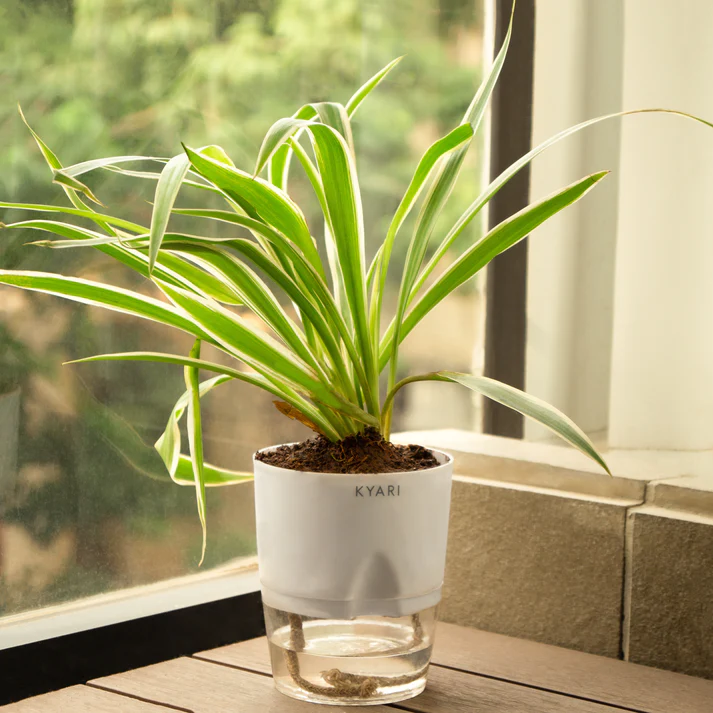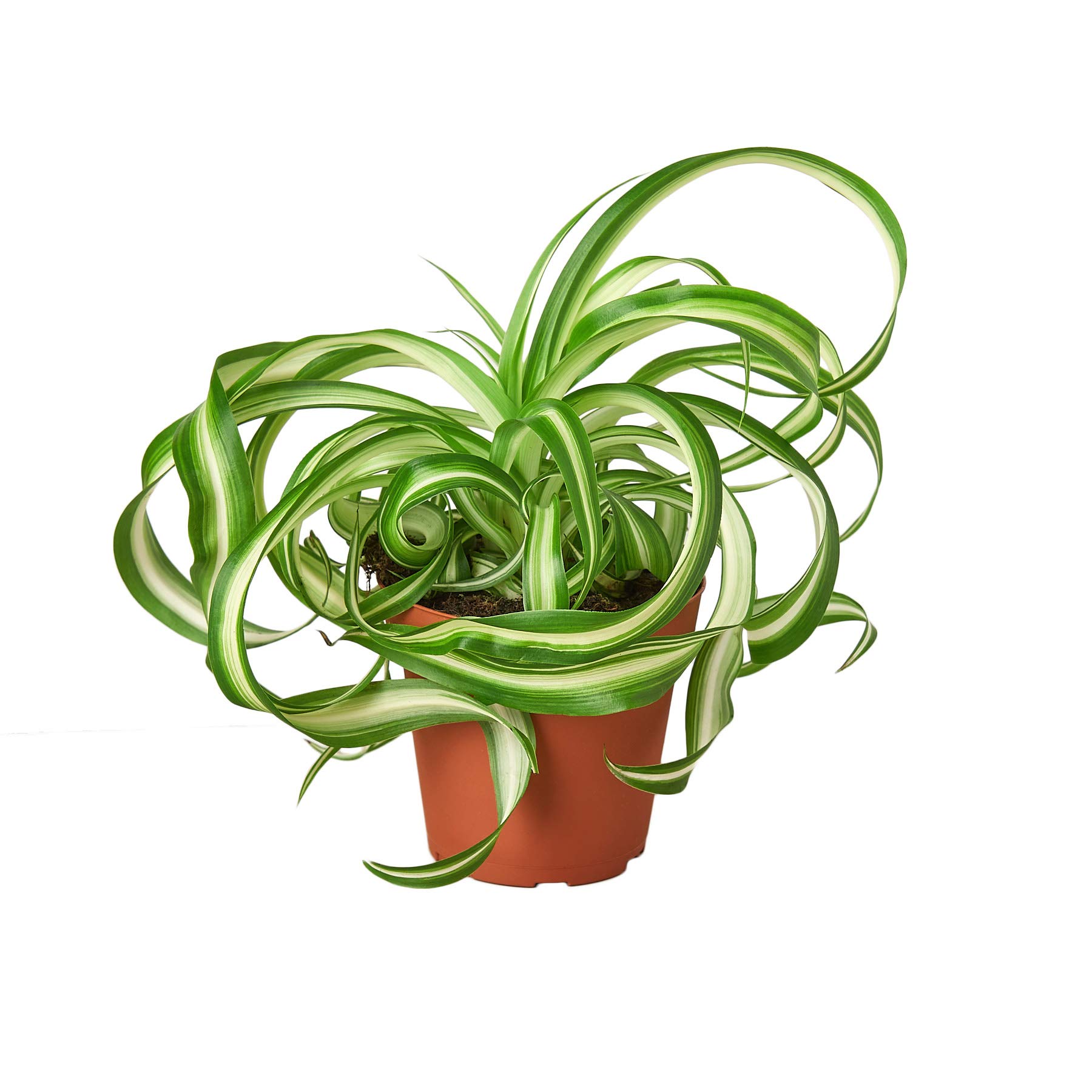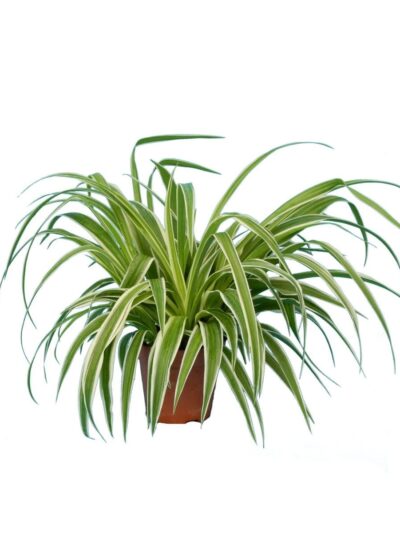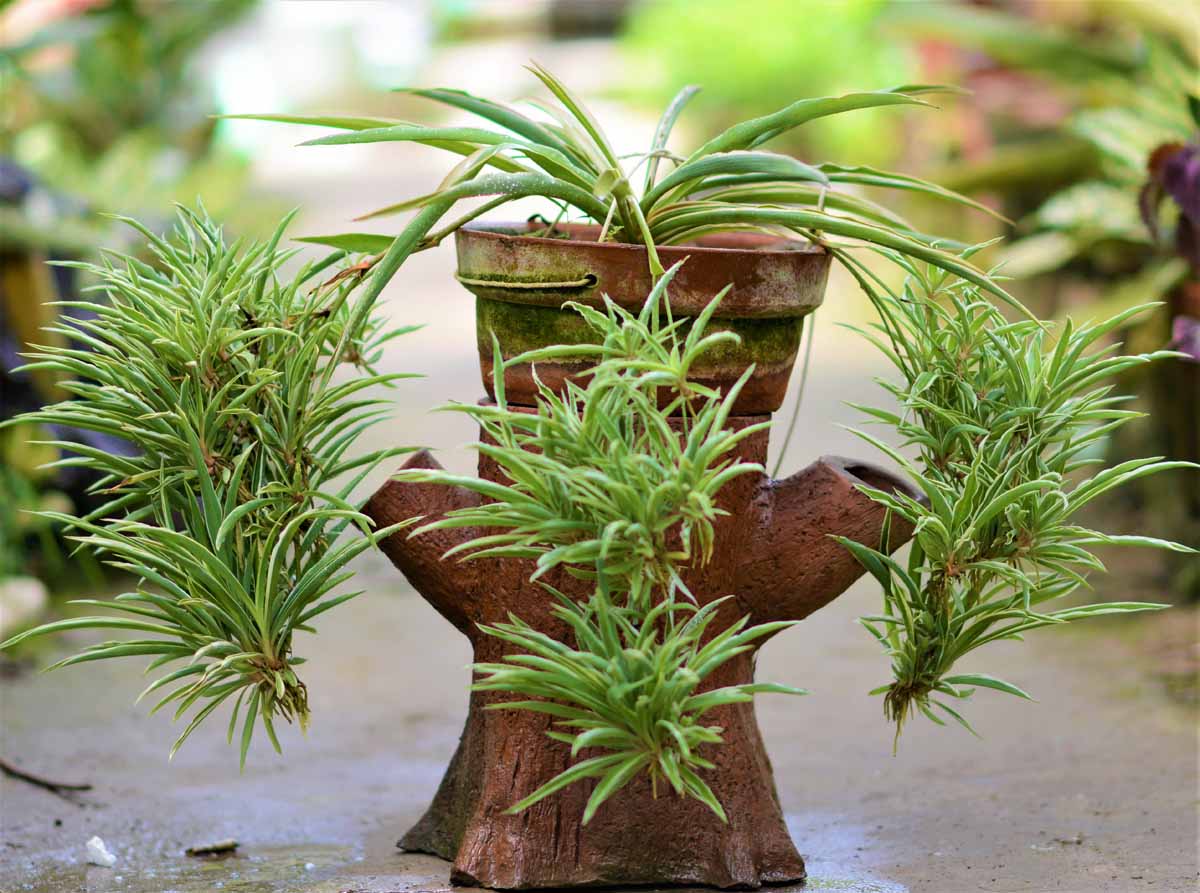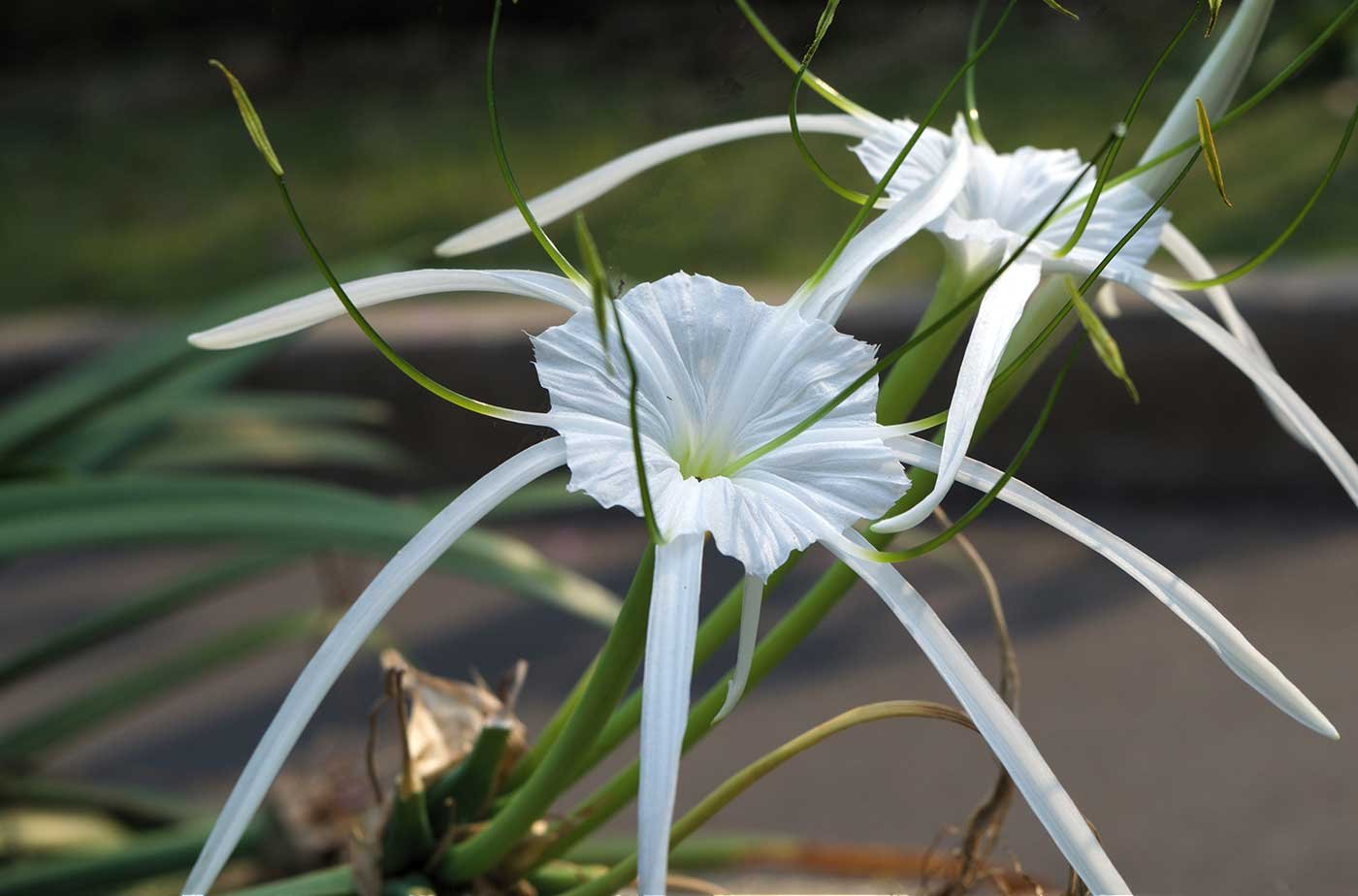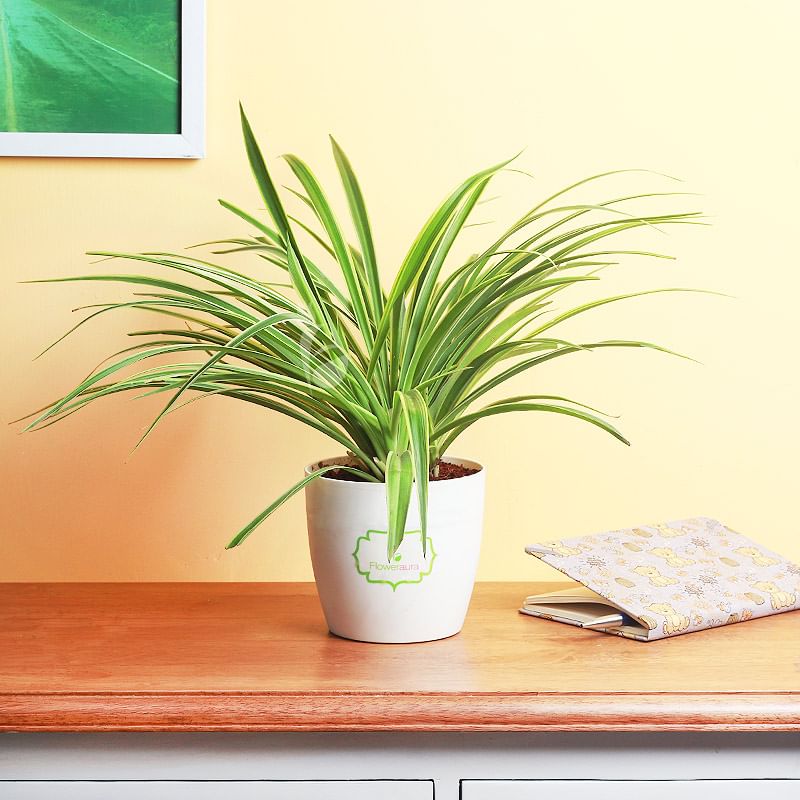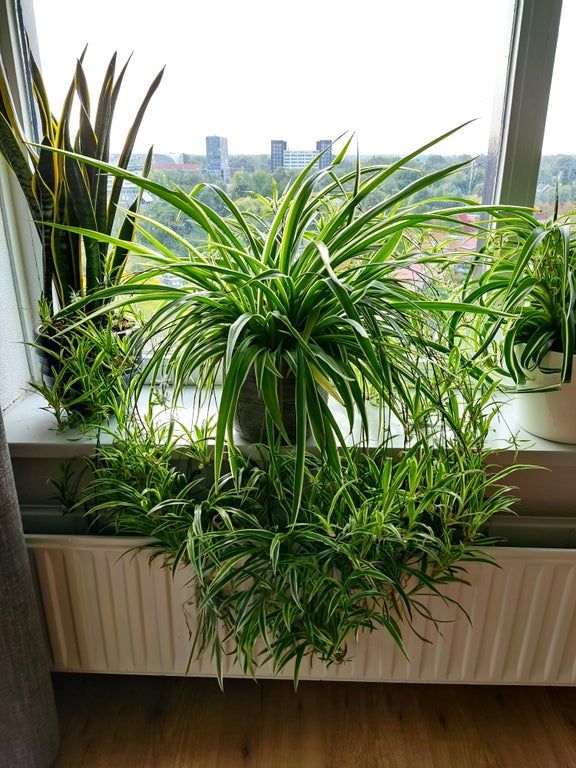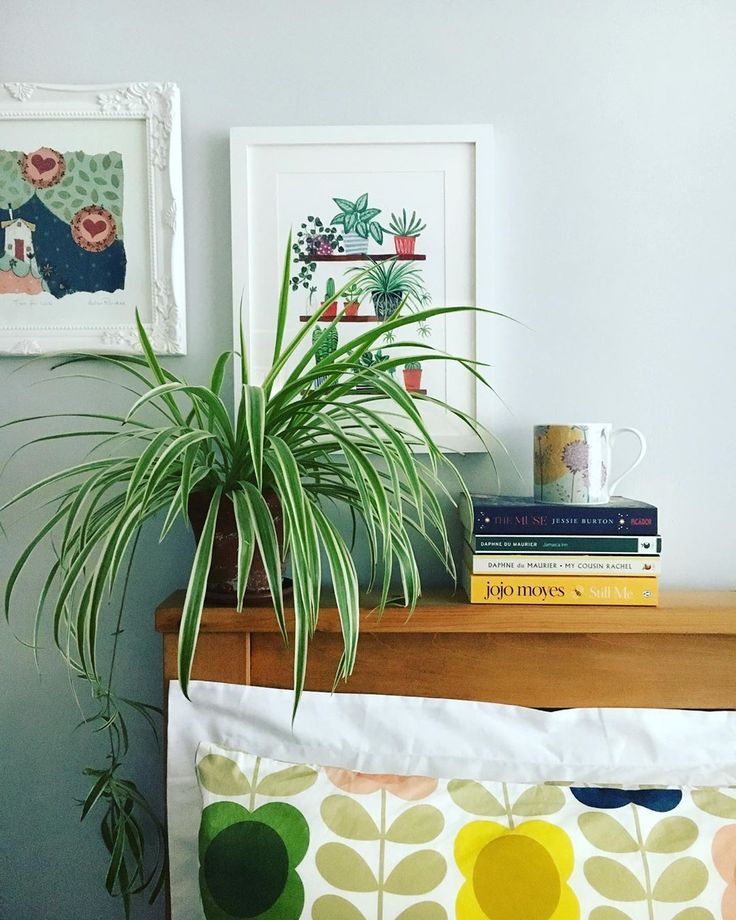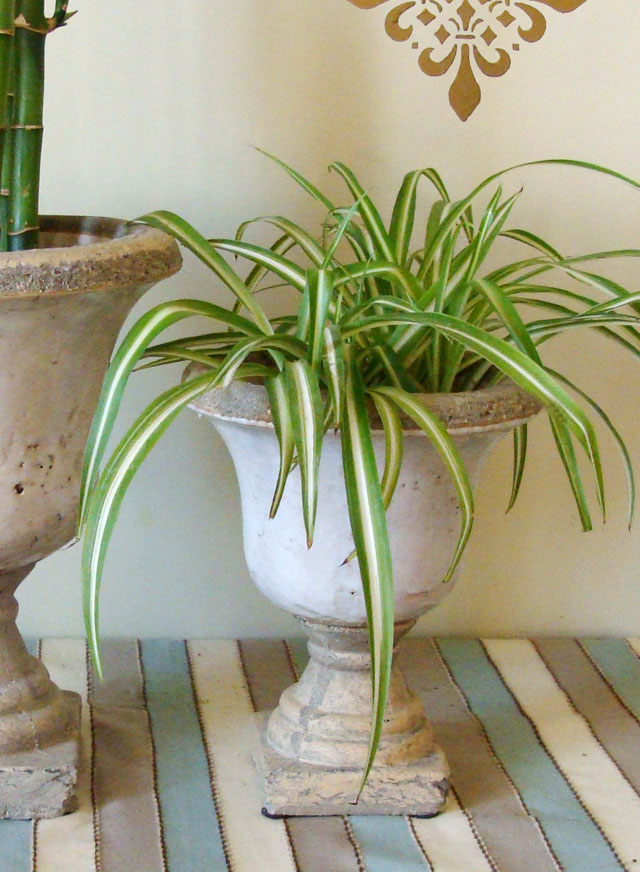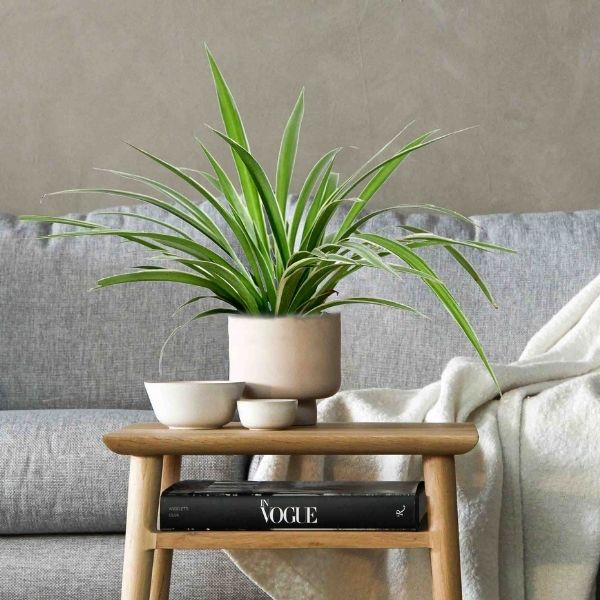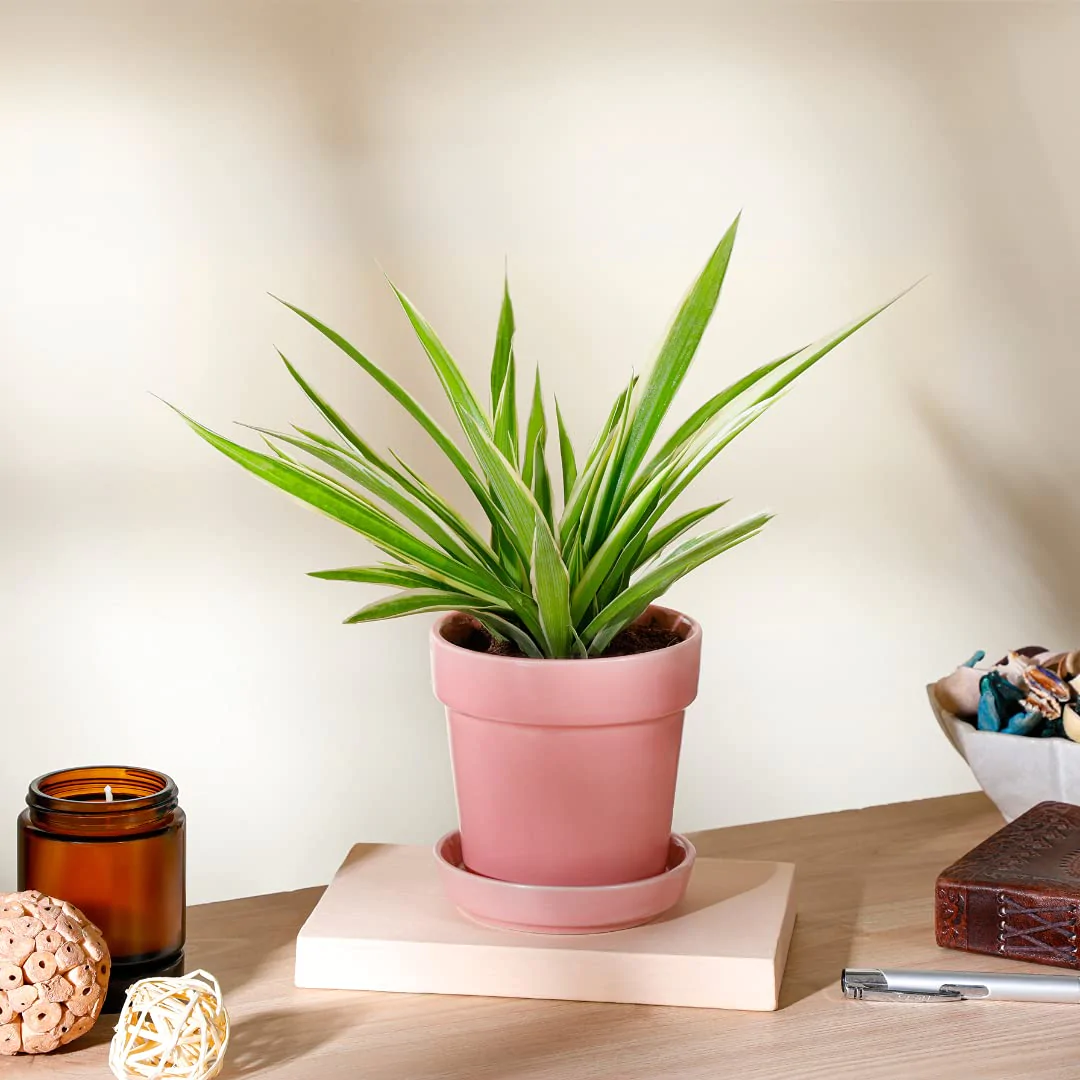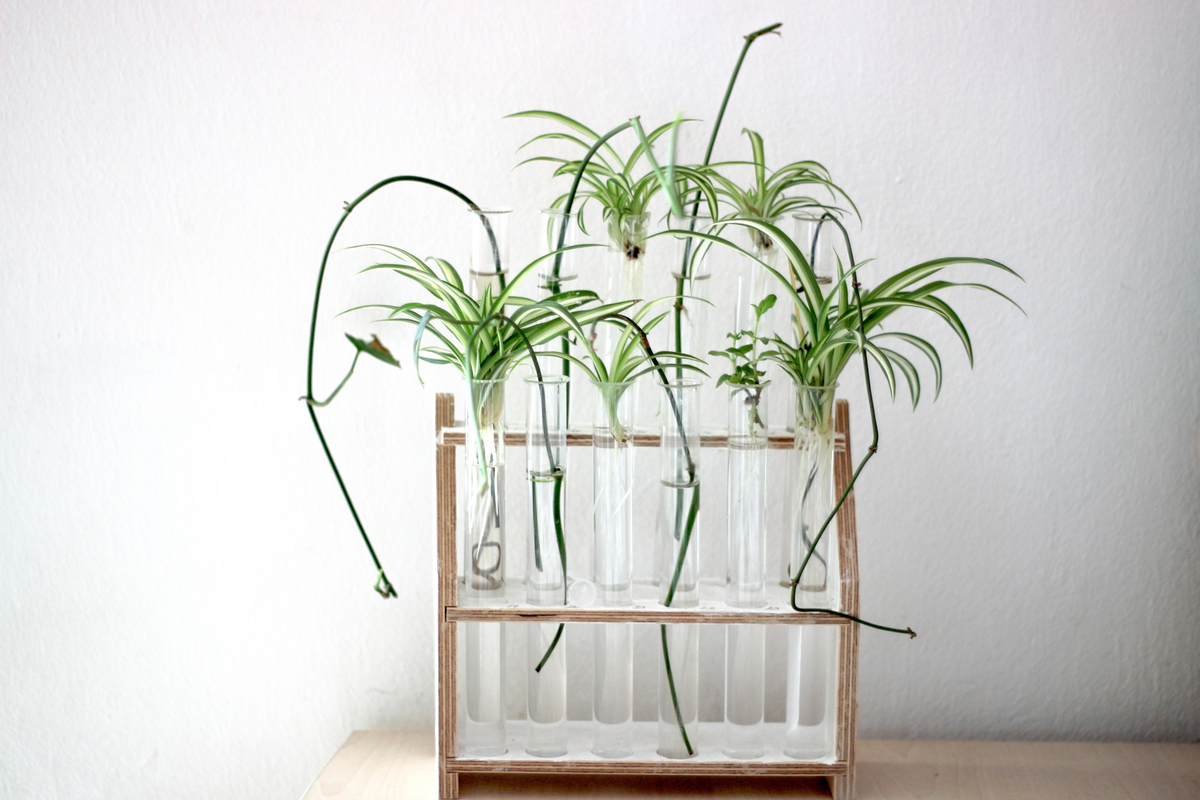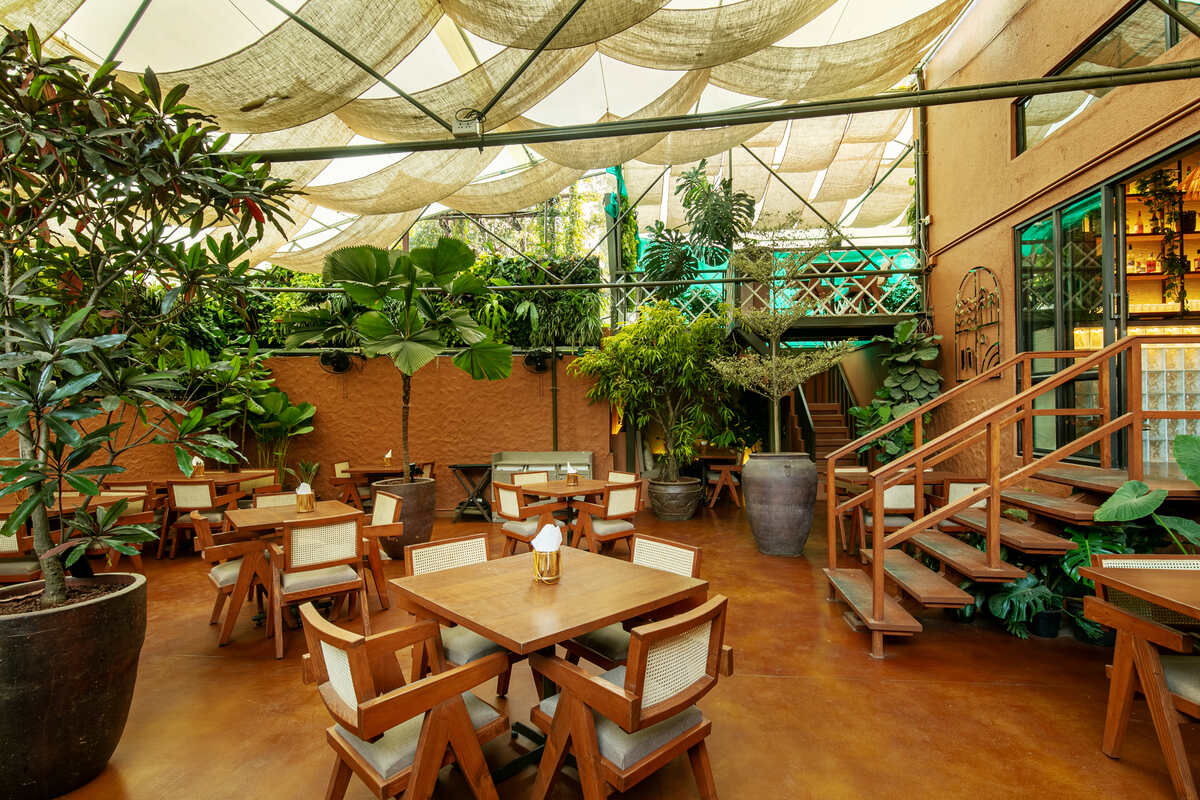Chlorophytum Comosum, known as spider plant or airplane plant, is one of the most adaptable indoor plants. It is the easiest to grow, as care for the spider plants is minimal. The beautiful spider plant has many benefits. It survives in all conditions and looks attractive on macrame hangers or wall shelves and indoor planters. It got its name due to the spiderettes, which dangle down from the mother plant like spiders on a web. The spider plant has almost 200 variegated varieties, most of which sport small white flowers.
Most spider plant varieties are easy to find; however, some may not be easily available. The versatile plants are ideal as trailing and cascading natural greenery to enhance the home decor.
The pretty plant improves your home aesthetics and is a natural air purifier. Also, the plant needs very little care to add that oomph to a drab corner. So, it has become popular among plant newbies and black thumbs!
In this article, we have talked about varieties of spider plants, care tips, decor ideas, benefits, and where to buy the best plants online.
Contents
- 1 About Spider Plant – An Overview
- 2 Varieties of Spider Plants for indoor
- 2.1 Spider Plant #1 – Bonnie (Chlorophytum comosum)
- 2.2 Spider Plant #2 – Variegated
- 2.3 Airplane Plantis #3 – Ocean
- 2.4 Airplane Plantis #4 – Zebra (Chlorophytum laxum)
- 2.5 Spider Plant #5 – Atlantic (Chlorophytum comosum ‘Atlantic’)
- 2.6 Spider Plant #6 – Variegated Bonnie
- 2.7 Spider Plant #7 – Hawaiian (Chlorophytum viridescens ‘Hawaiian’)
- 2.8 Spider Plant #8 – Fire Flash
- 2.9 Spider Plant #9 – Shamrock
- 2.10 Spider Plant #10 – Purple (oxalis chlorophytum)
- 2.11 Spider Plant #11 – Vittatum (Chlorophytum comosum ‘Vittatum’)
- 2.12 Spider Plant #12 – Chlorophytum capense
- 3 How to grow and propagate Spider Plants?
- 4 Watch this video: How to propagate Spider Plants the correct way (2 mins 41 seconds)
- 5 How to care for Spider Plants?
- 6 What are the benefits of Spider Plant for home?
- 7 Pests and problems
- 8 Common issues for your spider plant
- 9 Our top Spider Plant recommendations for home (Buy here)
- 9.1 Ugaoo Spider Plant With Hanging Pot
- 9.2 NurseryLive Chlorophytum Plant
- 9.3 Kyari Spider Plant With Self Watering Pot
- 9.4 Urbano Spider plant Bonnie
- 9.5 Budsnblush Spider plant “Lemon” / Air Purifying Plants
- 9.6 Peppyflora Chlorophytum Ocean
- 9.7 Rootstock Nursery Spider Plant (Chlorophytum comosum)
- 9.8 Flora Variegated Spider Lily
- 9.9 Spider Plant Moss Ball – Kokedama
- 9.10 Nursery Nisarga Golden Pandanus
- 9.11 Floweraura Soulful Spider Plant
- 10 Spider Plant indoor decor ideas (Image gallery)
- 11 FAQs
- 12 Conclusion
- 13 Decorative flower digest: 29+ tasteful styling & buying ideas
About Spider Plant – An Overview
| Common names | Spider plant, spider ivy, ribbon plant |
| Botanical name | Chlorophytum comosum |
| Family | Asparagaceae |
| Plant type | Herbaceous, perennial, house plant |
| Mature size | 1–2 ft. tall and wide |
| Sun exposure | Partial, shade |
| Soil type | Loamy, well-drained |
| Soil pH | Neutral |
| Bloom time | Flowers regularly |
| Flower colour | White |
| Foliage colour | Blue / Green |
| Hardiness zones | 9–11 (USDA) |
| Season features | Fall bloom, spring bloom, and winter bloom |
| Native area | Central and Southern Africa |
Varieties of Spider Plants for indoor
Spider Plant #1 – Bonnie (Chlorophytum comosum)
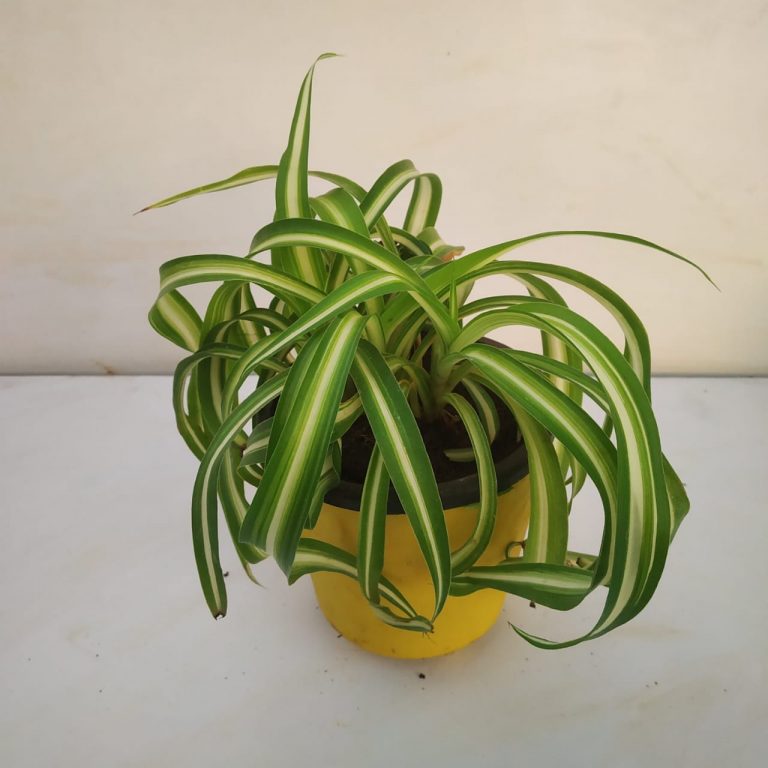
Image Source: Nursery Buy
Chlorophytum comosum ‘Bonnie’ is commonly known as the curly plant. The curly plant grows in plain green as well as in a variegated form. It is distinctive, with a white stripe through each leaf center.
Spider Plant #2 – Variegated
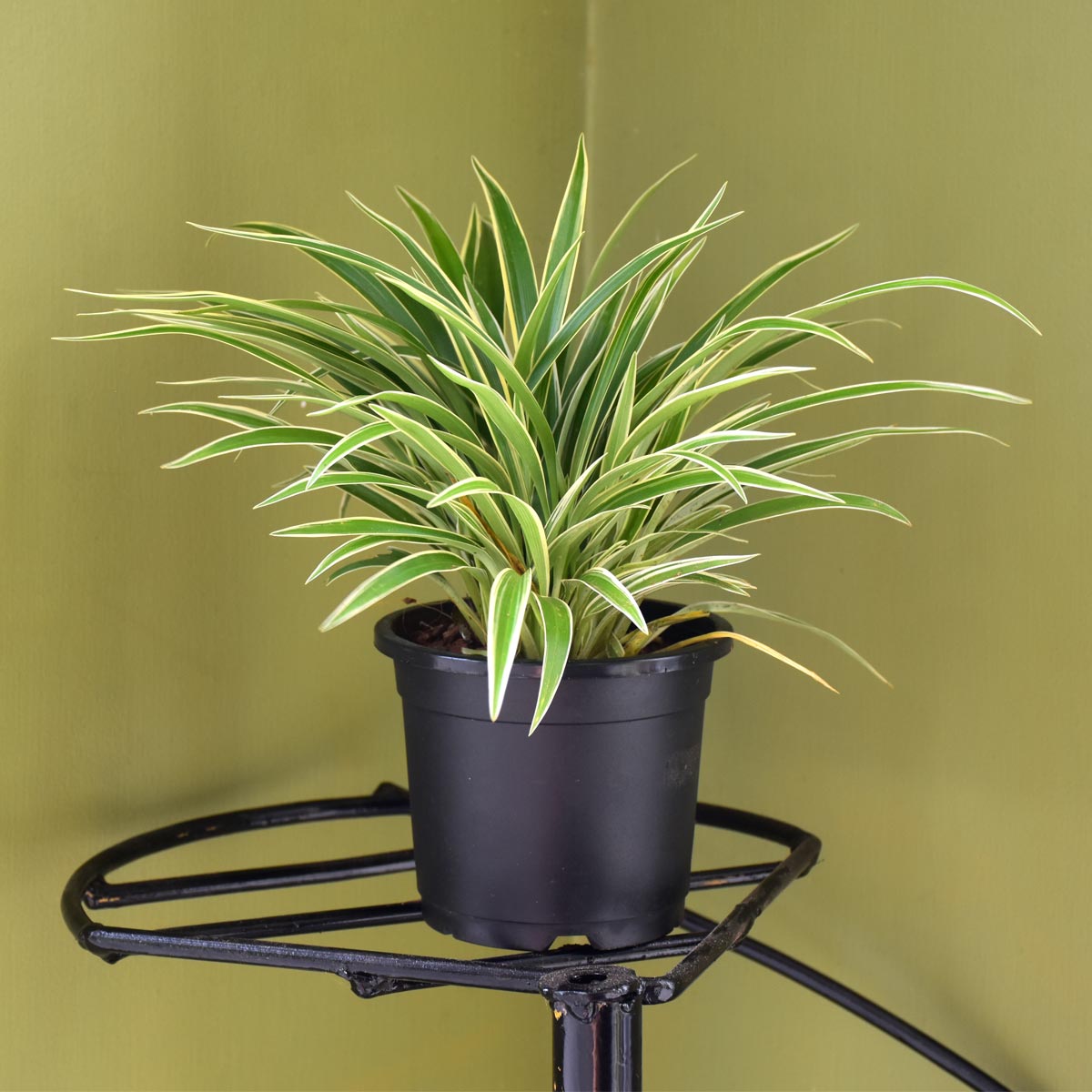
Image Source: Trivandrum Garden Tech
This variety is one of the easiest to grow and a great choice for novice gardeners. The beauty has a weeping, arching shape and produces a mass of strap-shaped leaves. The coloured green leaves wear white stripes on the outer leaf edges. Easily grown as an indoor plant, it sports tiny white flowers.
Airplane Plantis #3 – Ocean
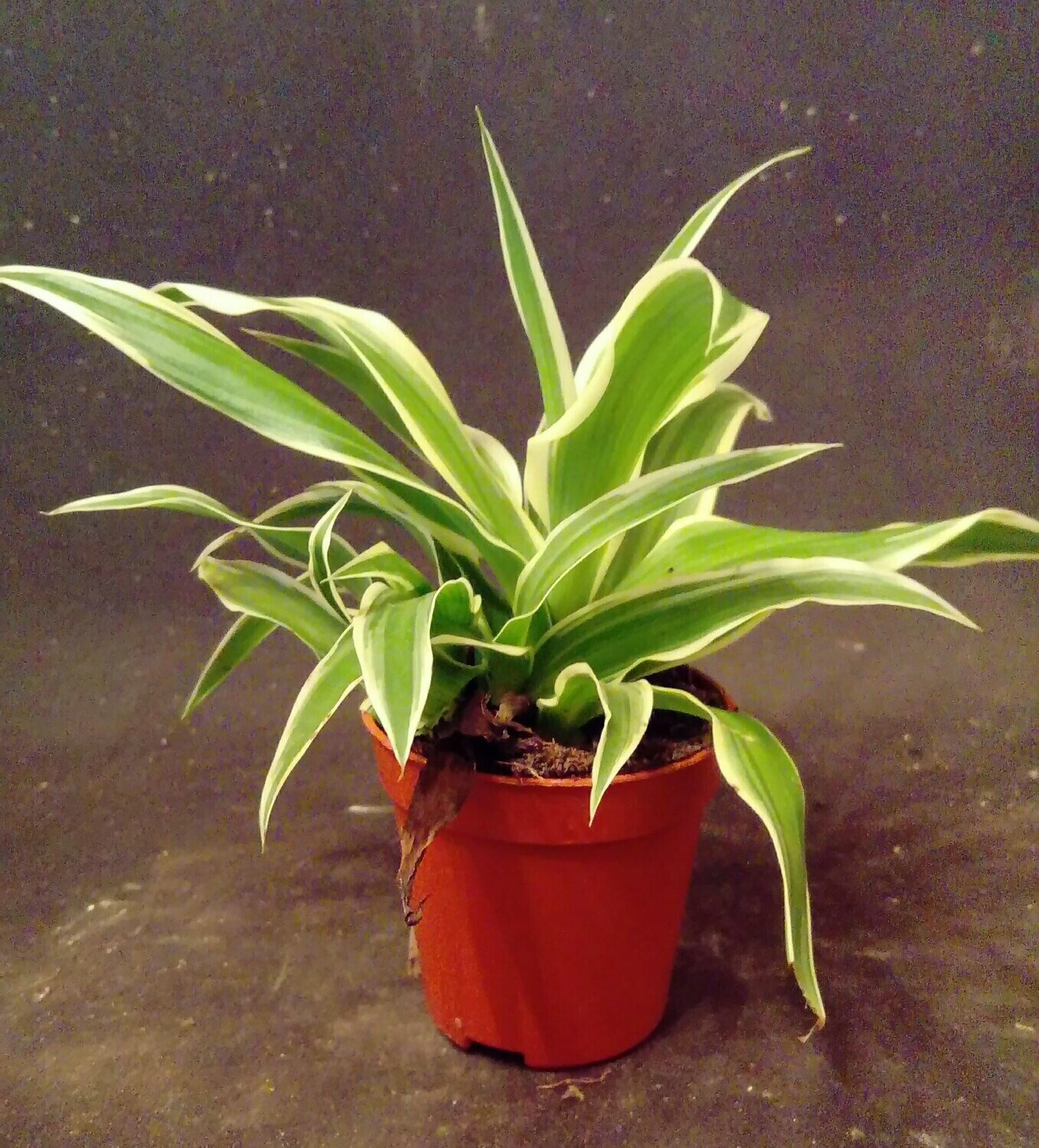
Image Source: Succulent Wales
The compact Ocean plant looks beautiful in hanging pots and baskets. The plant shows off green leaves with creamy white margins and edges that can grow up to 8 inches long and wide. In peak season, the plant surprises you with tiny, white, star-shaped flowers. The plant looks stunning, with small plantlets cascading down from long stems.
Airplane Plantis #4 – Zebra (Chlorophytum laxum)
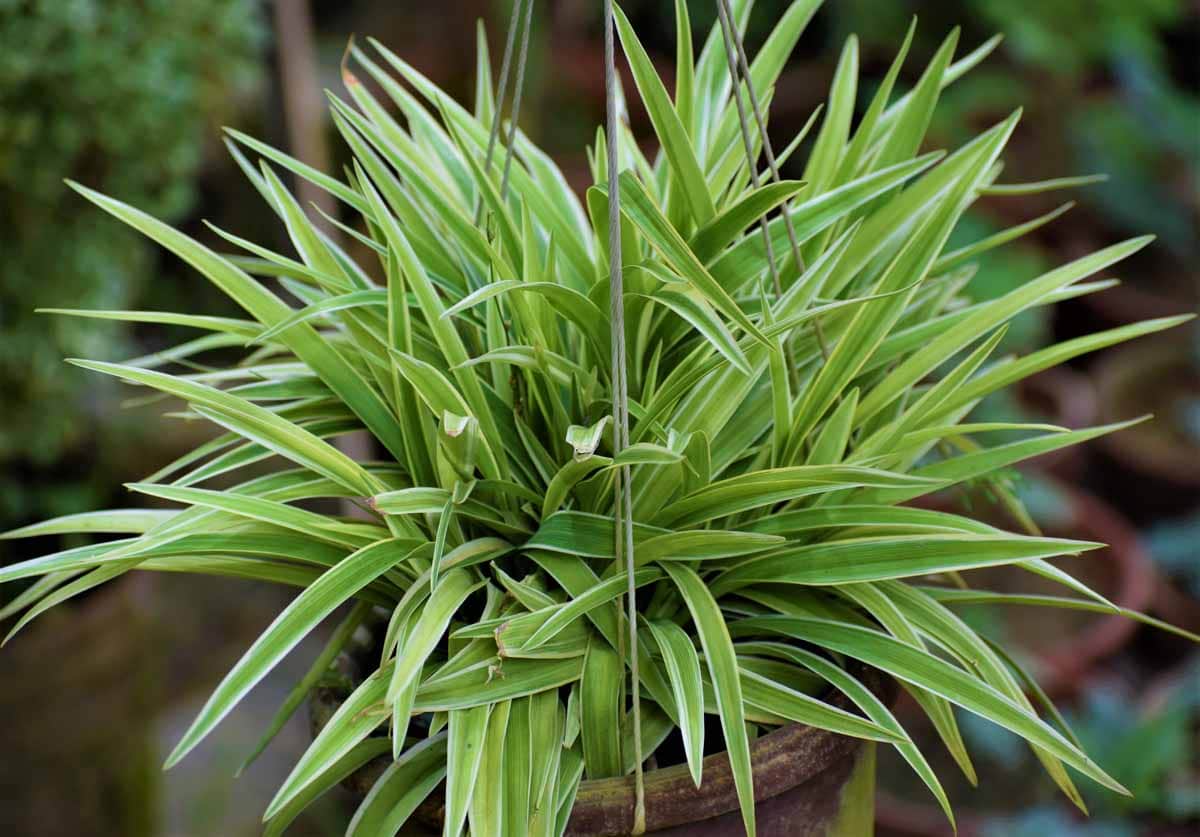
Image Source: Nestreeo
The fastest-growing variety, the Zebra plant, initially sports leaves that will grow yellow edges, which turn white as the plant matures. This variety is a great hanging plant. However, it can also be a splendid ground covering with its grass-like texture. The plant grows well with 12 inches long and 18-24 wide leaves.
Spider Plant #5 – Atlantic (Chlorophytum comosum ‘Atlantic’)

Image Source: bakker.com
Featuring white-ribboned leaves that are edged with green, the Atlantic or Reverse plant thrives in either shade or bright light and is exceptionally easy to maintain both outside and indoors.
The beautiful variety grows from 10 to 20 inches tall and 4 to 10 inches wide. It is best placed in tall planters or in hanging baskets to show off its beautiful foliage. Glorious striped leaves cascading downward look beautiful in any setting.
Spider Plant #6 – Variegated Bonnie
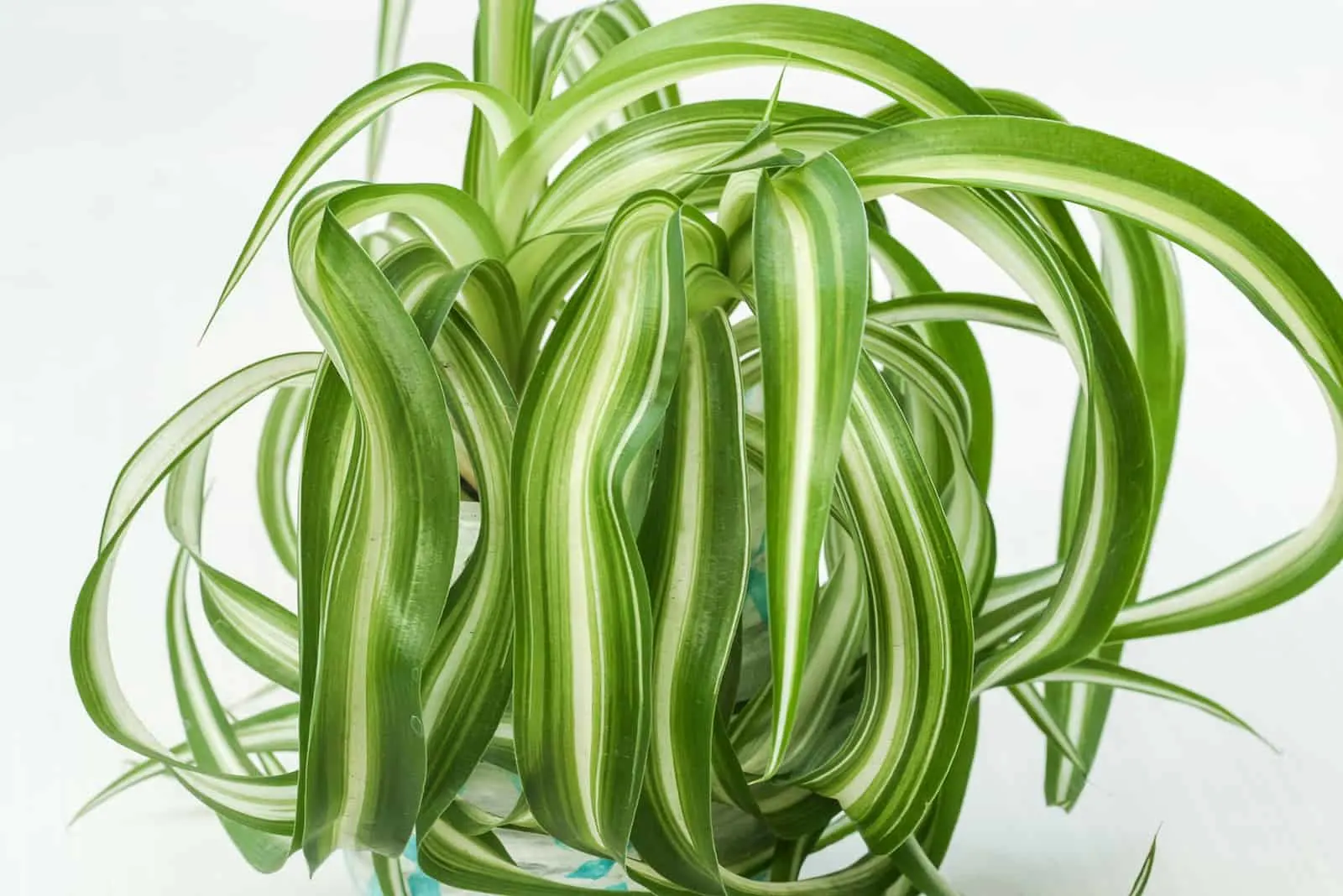
Image Source: Positive Bloom
This lovely plant has lilting, arched green foliage with long, thin leaves and creamy-colored edges. The variegated Bonnie looks good in hanging baskets. However, it can be paired with other houseplants to enhance your home décor. The green leaves are 8 inches wide, and the easy-to-grow plant is favorable for beginners.
Spider Plant #7 – Hawaiian (Chlorophytum viridescens ‘Hawaiian’)
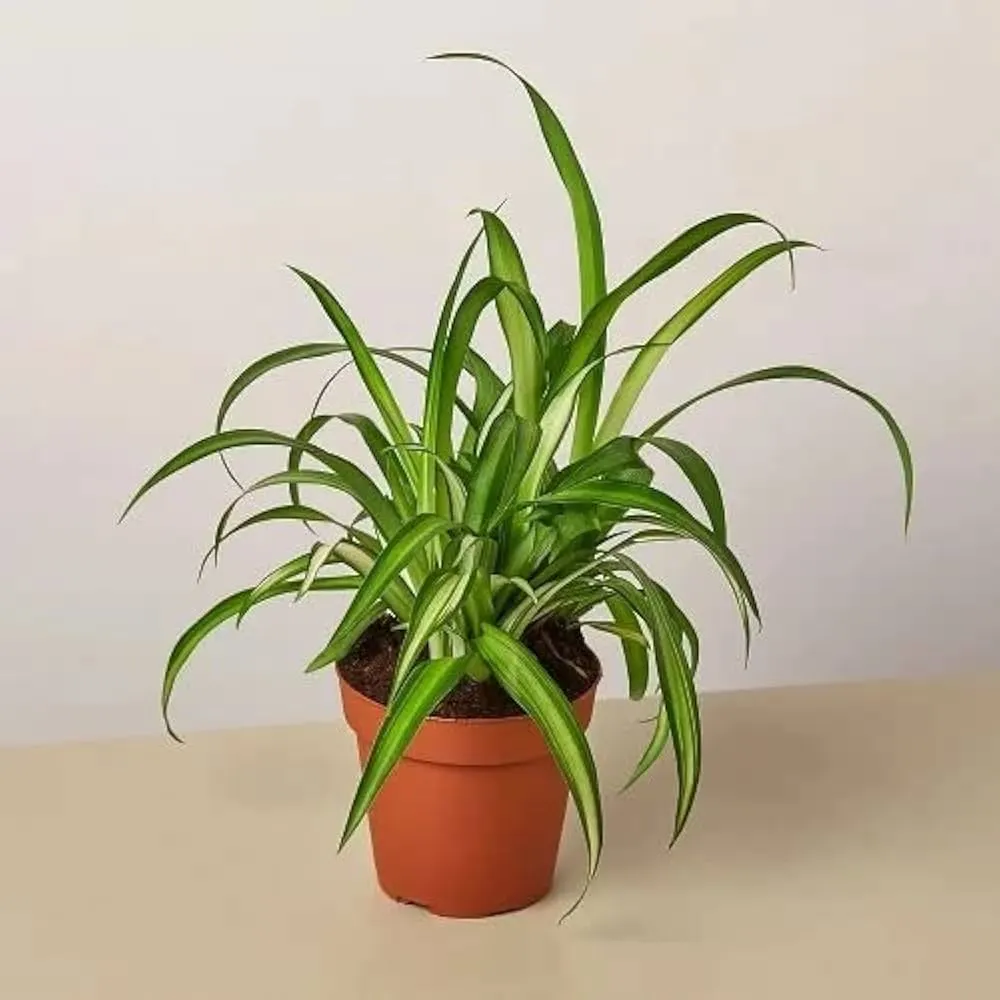
Image Source: amazon.in
The Golden Glow plant, or Hawaiian plant, is a hybrid, so it tends to be a bit smaller than other cultivars. Compact and small in size, it features green foliage with glossy leaves. The plant proudly boasts gorgeous shades of champagne to yellow on the center stripe. It grows well in well-drained soil and thrives in both direct light and partial shade.
Spider Plant #8 – Fire Flash
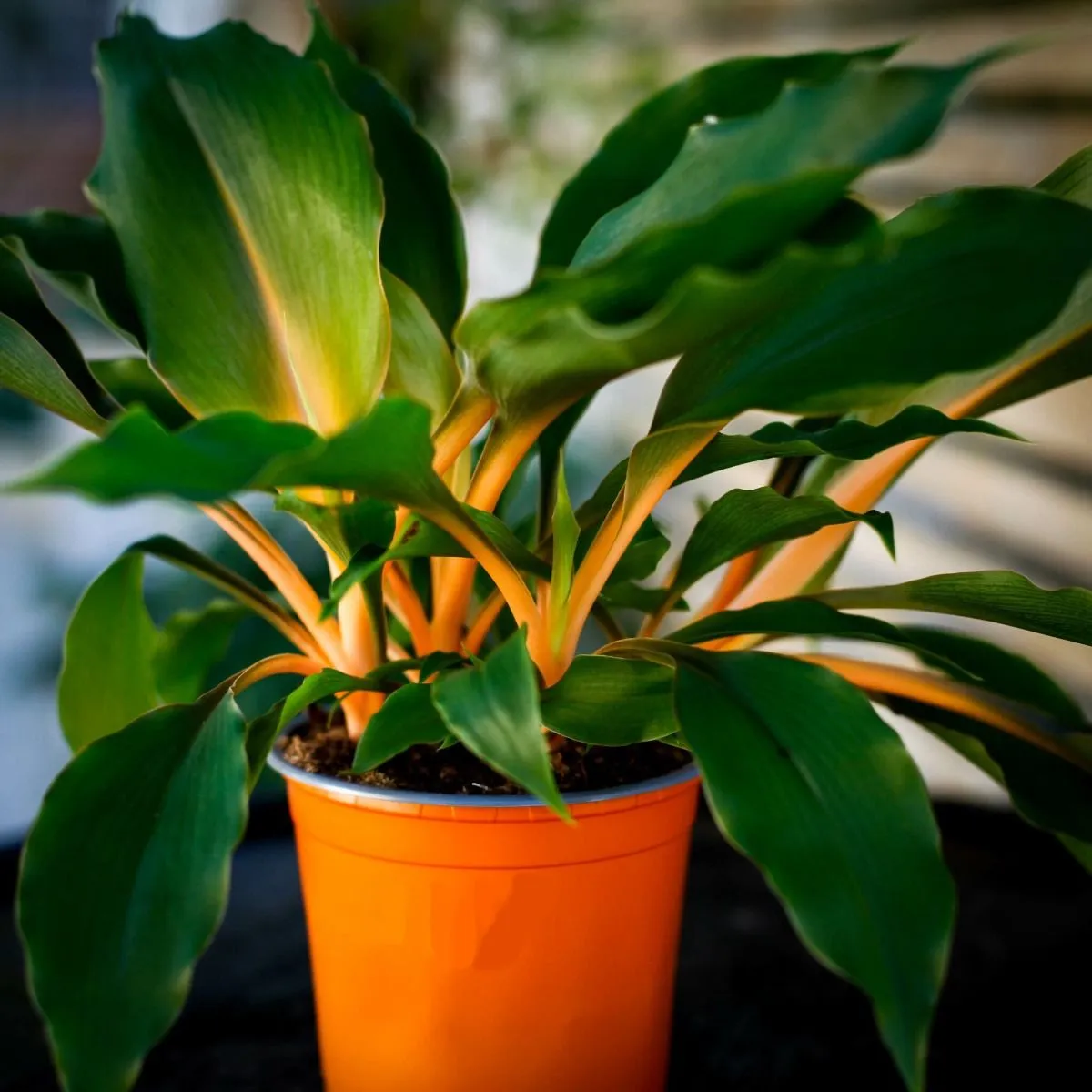
Image Source: gardeningexpress.co.uk
The Chlorophytum orchidastrum Green Orange or Fire Flash plant variety is also known as the “Mandarin Orange” spider plant. The rare indoor spider plant variety has bright orange stems and very broad, dark green leaves with flashy, attractive foliage. It is found in tropical and subtropical areas and is native to western and southern Africa. However, it thrives well indoors with proper care. The plant loves bright, indirect light and well-drained soil.
Spider Plant #9 – Shamrock

Image Source: almanac.com
A rare variety, the Shamrock plant has solid green leaves. It can grow both outdoors and indoors to improve air quality. Try this beautiful variety if you are a beginner with plants. It proves to be a lovely plant in hanging baskets and looks great as ornamental decor in living rooms. However, it looks equally good in a pot in rooms.
Spider Plant #10 – Purple (oxalis chlorophytum)
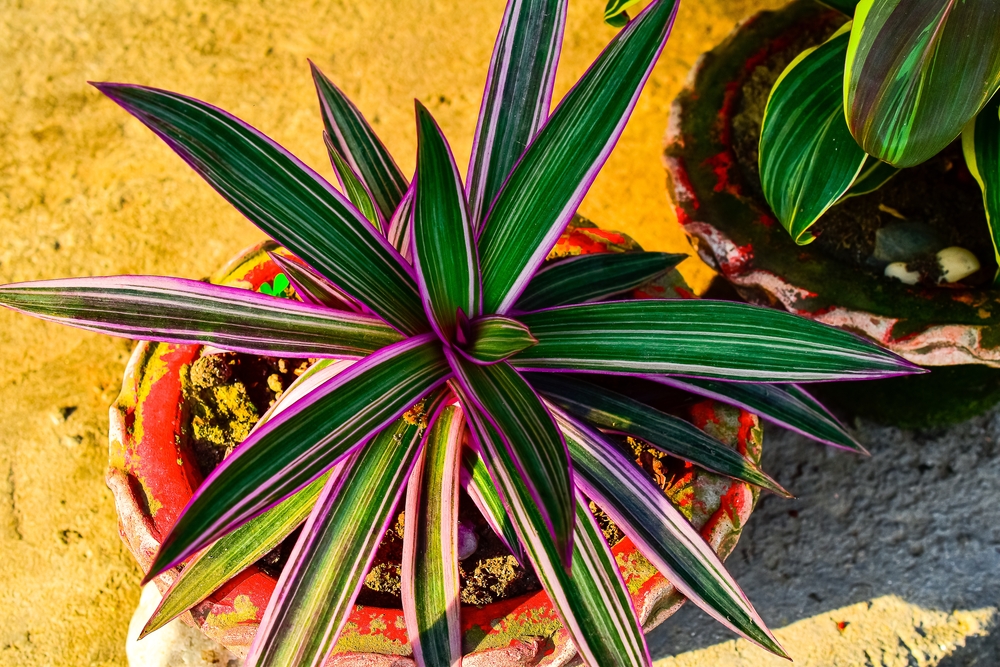
Image Source: GLF outdoors
The annual plant has palmately green leaves that are surprisingly aromatic. A fast-growing purple plant also produces very sweet-fragrant flowers that are violet in color. The purple beauty loves bright indirect light or full sun indoors.
Spider Plant #11 – Vittatum (Chlorophytum comosum ‘Vittatum’)
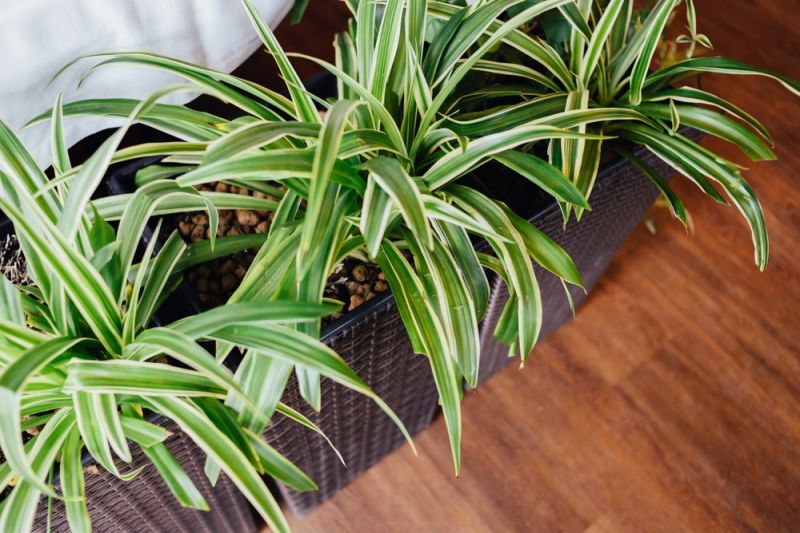
Image Source: Lacoste Garden Centre
One of the most popular varieties in the spider plant collection, the Vittatum, is an evergreen perennial. It features broad, creamy vertical stripes on a medium-green leaf. The thick foliage is slightly curved, and the plant grows to almost two feet in width. It is great for indoor decor and loves lower temperatures.
Spider Plant #12 – Chlorophytum capense
Image Source: Shoppe Malaysia
The unique variety is also called the bracket plant. Surprisingly, it doesn’t produce hanging offspring and has solid green leaves with a white edge. The plant variety looks stately in tall planters.
| Also see: 21 Affordable large planter & pot designs you must buy online! |
How to grow and propagate Spider Plants?
The easy-to-maintain plant can be propagated through spiderettes. One benefit of spider plants is that cuttings can be directly planted into the soil in their own pots. The right time to propagate is in the spring or early summer, the growing season. Their benefits include free propagation through spiderettes. Watch the growing spiderettes and when you spot the ting aerial starter roots, pluck them and start propagating in the following ways:
Pot the spiderettes
Start by removing a few of the baby spiderettes in order to avoid the mother plant’s depletion. Then plant them directly in a pot with a well-draining potting mix. Ensure that you leave the tiny roots already formed on the spiderette when snipping it off the mother plant!
| Also see: Peace lily plant care & styling: Ideal guide to grow indoors (Buy it!) |
Potting cuttings in soil
Carefully take your plant off of its pot and cut the rhizomatic roots with a sharp knife, separating the different rosettes of the plant. Then you can plant the rosettes in a pot. You can also root the spiderettes directly while attached to the mother plant.
Putting plant cuttings in water
You can propagate plants by putting the plant babies in a small glass vessel with a little water to cover the roots. Ensure that the container gets bright, indirect light, and change the water regularly. When the roots grow to 2 inches, pot them.
| Also see: Bonsai tree: Guide to grow top 12 plant species (+Buying options) |
Watch this video: How to propagate Spider Plants the correct way (2 mins 41 seconds)
How to care for Spider Plants?
These plants are not demanding and seem to thrive when left to themselves. However, they will happily grow if you ensure proper watering, indirect sunlight, and a well-drained potting mixture. If you are a beginner in gardening, here are some tips to give you a head start.
Light preference
These adaptable indoor plants prefer bright, indirect light. So, you should take care of the plant and turn it when you water it to provide light on all sides.
Watering
Ensure that you water thoroughly and allow the soil to dry between waterings. However, the watering depends on the temperatures and light in your home. Ideally, you should water every 10-14 days and check the soil moisture each week for dryness. Using distilled or rainwater is good for dry soil.
| Also see: How to grow, care for & decorate with Areca Palm? (+Buying options) |
Plant food
Plants will grow happily if you fertilize the potting mixture once per month in the spring and summer.
Repotting frequency
Repot the plants to take care of them and prevent the roots from drying out. However, when transplanting, use a well-drained potting mix and accommodate it in a larger container.
Cleaning
Ensure that you take care of the spider plant by cleaning the extra growth of leaflets, removing them, and preventing tangles.
Reddish-brown tips
Care for spider plants includes good water. If the water contains too much fluoride, you should water the plant with filtered water or rainwater.
What are the benefits of Spider Plant for home?
The lush-looking spider plant has a package of benefits and uses apart from adding to the aesthetic vibe of home interiors.
- Easy decor: They are an instant boost for boring corners.
- Fits anywhere: The adaptable plants look good in pots or hanging planters. Therefore, they can be placed in the living room as a hanging or in the bedroom as tabletop decorations.
- Pet-friendly: The benefits of spider plants include being non-toxic, which makes them pet-friendly.
- Purifies air: The most important benefit of the spider plant is its air-filtering quality. All the varieties act as air purifiers and filter formaldehyde, toluene, and xylene from indoor air.
- Great for beginner plant parents: Best of all, the spider plants are a great benefit for people who do not have a green thumb. Also, it is easier to start a small garden indoors with varieties of spider plants.
| Also read: Indoor plants designing guide |
Pests and problems
Spider plants are generally easy to care for but can still experience some common pests and problems. Mites and mealybugs can infest the plant, while overwatering or poor drainage can lead to root rot. Dry air, underwatering, or too much fertilizer can cause brown tips on leaves, while too much direct sunlight or fertilizer can cause yellow leaves. To prevent these issues, provide your plant with adequate water and sunlight, avoid over-fertilizing, and keep an eye out for pests.
Common issues for your spider plant
Why are the leaves on my spider plant fading and losing colour?
Fading and loss of colour on the leaves of a spider plant can be caused by several factors. Overexposure to direct sunlight or a lack of adequate light can cause fading. Over-fertilization can also cause the leaves to lose their colour. Additionally, if the plant receives too much water, the leaves can turn yellow and fade. Ensure that the plant is getting the right amount of light, water, and fertilizer to prevent further discolouration.
Why are the leaves on my spider plant turning brown on the edges?
Brown edges on the leaves of a spider plant can be a sign of dry air or underwatering. Spider plants prefer slightly moist soil, so if the soil is too dry, the leaves can dry out and turn brown on the edges. Dry air can also cause the tips and edges of the leaves to turn brown. Increase humidity levels and ensure adequate watering to prevent further browning.
Why isn’t my spider plant producing baby spiderettes?
Spider plants produce baby spiderettes when they are healthy and mature enough. If the plant is not producing spiderettes, it could be due to several factors, such as inadequate light, over-fertilization, or lack of nutrients. Ensure that the plant is getting enough light and water, and avoid over-fertilizing to encourage the production of spiderettes.
Our top Spider Plant recommendations for home (Buy here)
Ugaoo Spider Plant With Hanging Pot
| B U Y H E R E |
NurseryLive Chlorophytum Plant
| B U Y H E R E |
Kyari Spider Plant With Self Watering Pot
| B U Y H E R E |
Urbano Spider plant Bonnie
| B U Y H E R E |
Budsnblush Spider plant “Lemon” / Air Purifying Plants
| B U Y H E R E |
Peppyflora Chlorophytum Ocean
| B U Y H E R E |
Rootstock Nursery Spider Plant (Chlorophytum comosum)
| B U Y H E R E |
Flora Variegated Spider Lily
| B U Y H E R E |
Spider Plant Moss Ball – Kokedama
| B U Y H E R E |
Nursery Nisarga Golden Pandanus
| B U Y H E R E |
Floweraura Soulful Spider Plant
| B U Y H E R E |
Spider Plant indoor decor ideas (Image gallery)
-
Image Source: SiLive.com
-
Image Source: Sunset.com
-
Image Source: Lindsey on Instagram.com
-
Image Source: Creative Jewish Mom
-
Image Source: Magic Bricks
-
Image Source: Wild Roots.
-
Image Source: Pinterest
-
Image Source: Plantmojo
-
Image Source: UrbanPlants
-
Image Source: Magic Bricks
-
Image Source: Carousel.
-
Image Source: Meesho.com
-
Image Source: Happy Sprout
FAQs
Do spider plants purify the air?
Yes, spider plants are known for their ability to purify the air by removing harmful pollutants such as formaldehyde and benzene. They are also effective at removing carbon monoxide and nitrogen dioxide. Their air-purifying abilities make them a popular choice for indoor spaces such as homes and offices.
How to grow a spider plant from seed?
Spider plants can be propagated from seeds, but it is not a common method. To grow a spider plant from seeds, plant the seeds in a well-draining potting mix, keep the soil moist, and place the pot in a warm, bright location. Germination can take up to two weeks, and once the plant is established, it can be treated like a mature spider plant.
How long does a spider plant live?
With proper care, a spider plant can live for several years. They are known to be hardy and resilient plants, and their lifespan can be extended with good growing conditions. Mature spider plants can even produce baby spiderettes, which can be propagated into new plants with care, allowing the plant to continue living for many years.
Can I grow spider plant as an outdoor garden plant?
Spider plants are typically grown indoors, but they can be grown outdoors in warmer climates. They prefer indirect sunlight and well-draining soil. However, they are not cold-hardy plants and should be protected from frost. In areas with colder climates, it is best to keep spider plants as indoor plants.
Conclusion
The spider plant, a native of South Africa, has now become a favorite indoor plant universally. The benefit of the graceful air-purifying plant is its ability to adapt to all kinds of interiors. This plant becomes a statement piece wherever you place it. It can enhance a tabletop, a mantle, or a hanging plant equally.
The spider plant varieties look attractive and eye-catching in hanging baskets or ceramic planters. The leaves grow upward and arch outward, offering a wildly unique appearance. The low-maintenance plant has become popular among beginner plant parents and busy working couples as they gain all the benefits with minimum effort.
To get the most benefit out of indoor plant variety, do follow the tips listed above. We are sure that you will love some of our decor tips in the image gallery given above.
You can find the plant that best suits your room decor and available space. So, to start your collection of the best plant varieties, browse through our top recommendations, and be a happy plant parent.
*The featured image used in this article is by No Broker
Decorative flower digest: 29+ tasteful styling & buying ideas
Decorative flowers are artificial flowers used to accessorize the home and enhance its beauty. These faux flowers have come


